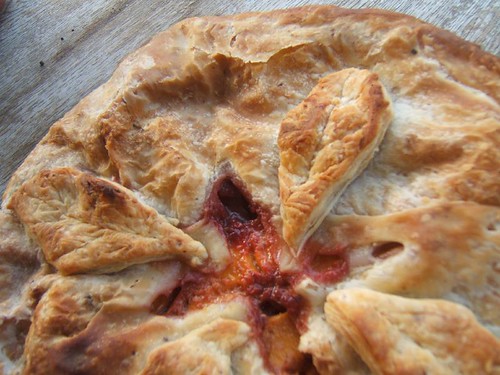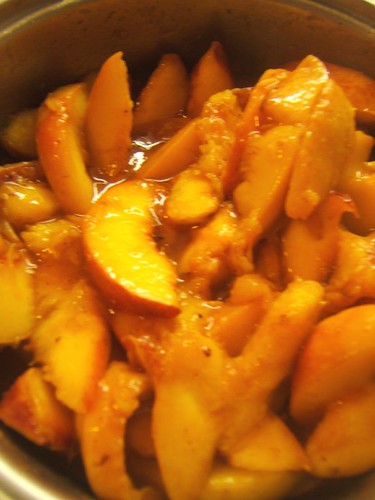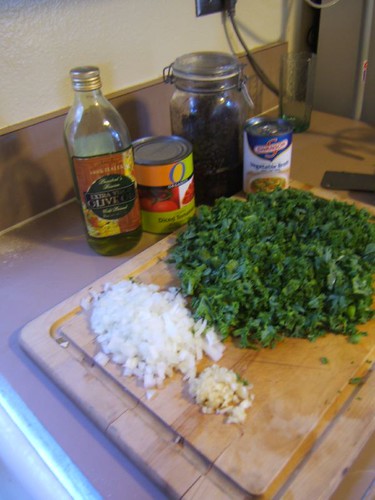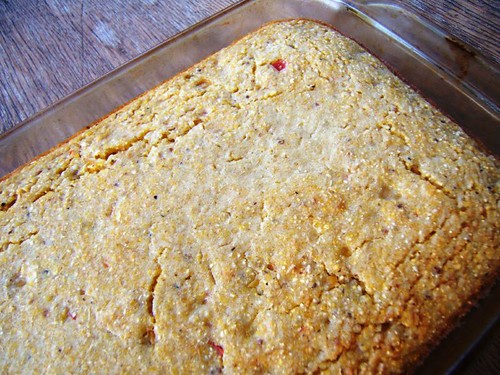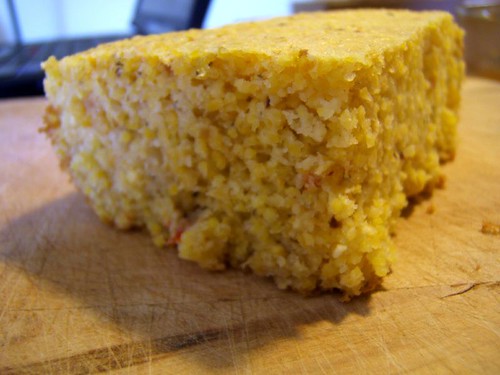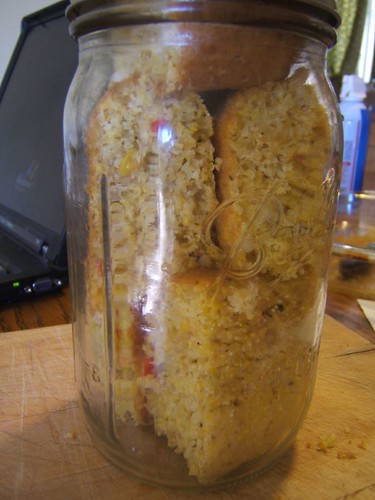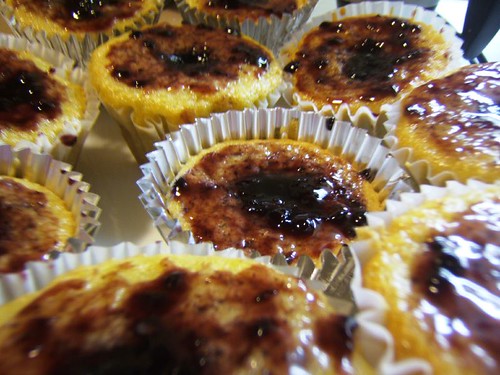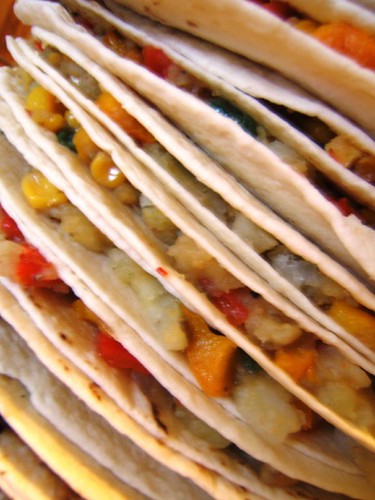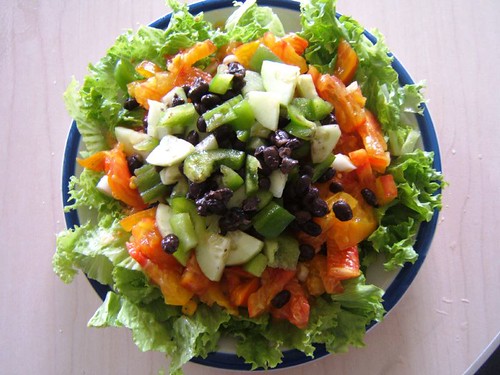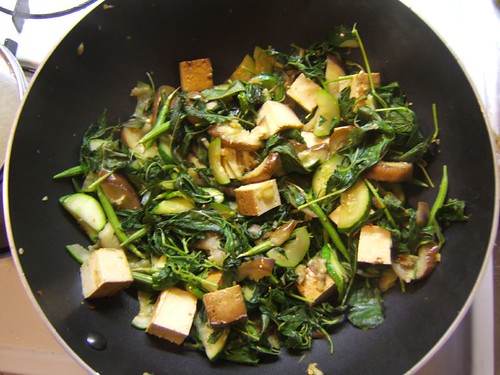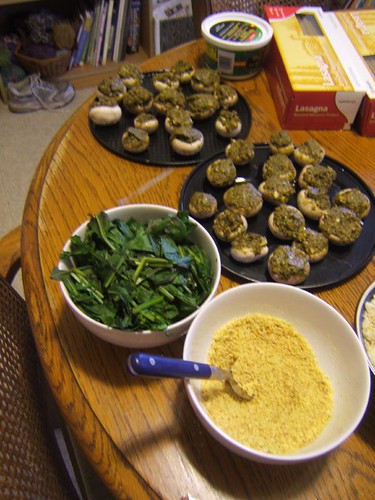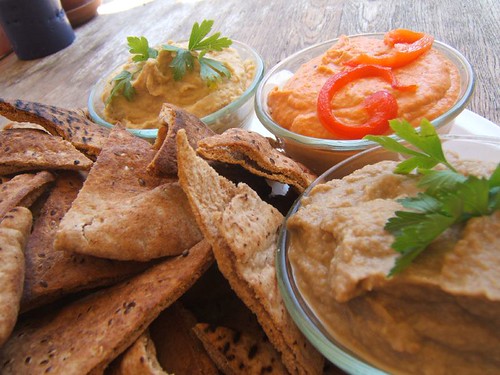
Yum, no? I made baba ghanoush, roasted red pepper hummus, and a classic plain hummus. It sounds like a lot of work to make three dips, but a lot of the prep work for these is combined, so if you're going to commit to one, the trio can be done for not a lot of additional effort. For example, you can roast the eggplant, red pepper, and garlic at the same time, and also have the pita toasts going on your second oven rack. And then you have a great selection of dips to take to parties, break out as snacks, spoon on top of salads, etc. The possibilities are endless!
To make your own, you will need:
1 head garlic
1 large eggplant (1.5-2lbs)
2 red peppers, halved, with seeds removed
2 c. chickpeas
1/4 c. +2 tbsp lemon juice (1/4 c. for hummus, 2 tbsp for baba ghanoush)
1/4 c. tahini (2 tbsp for hummus, 2 tbsp for baba ghanoush)
1 tbsp cumin (2 tsp for the hummuses, 1 tsp for baba ghanoush)
1/4 c. cayenne (optional)
2 tbsp olive oil (1 for hummus, 1 for baba ghanoush), plus ~2tbsp for roasting vegetables
salt to taste
a few sprigs parsley for garnish
NOTE: Both hummus and baba ghanoush can be adjusted a lot to suit your tastes. These are the general proportions that create a hummus that I like, but you may find you prefer something a little different. Treat the recipes more as suggestions than anything set in stone, and feel free to adjust quantities or make additions as you see fit.
If you want to make pita chips, you will also need some pita bread. I used 1 package of 8 pitas for the potluck, but you definitely get enough dip to use up a couple of packages. Slice pitas into eights to make chips
1. Slice eggplant in half and salt. Leave eggplant to sweat for 30 minutes.
2. Brush eggplant and red peppers with olive oil and arrange on a baking sheet. Place garlic on baking sheet as well. Bake in a 450F oven until eggplant is soft and peppers are slightly blackened, ~20 min. If you are making pita chips, you can also arrange them on a baking sheet and toast while you have the oven going.
3. While the vegetables are roasting, you can get started on the plain hummus: in a food processor, combine the chickpeas, 1 tbsp olive oil, 2 tbsp tahini, 2 tsp cumin, and 1/4 c. lemon juice. Blend until smooth, thinning with water as needed (you can also thin with lemon juice or olive oil--be sure to taste test frequently to see how things are shaping up!)
4. Remove vegetables from oven. Leave the eggplant and peppers for a moment. Pull all the cloves off of the garlic and squeeze the garlic out of its skins. Add half of the garlic to the hummus and blend thoroughly. Remove a little more than half of the hummus from the food processor, and your classic garlic hummus is done! The hummus left in the food processor will form the basis of the red pepper hummus.
5. Peel the skins off of the red peppers. Slice a thin piece or two off of the peppers to use as garnish. Coarsely chop the remaining pepper and toss in the food processor with hummus. Blend until smooth. Scrape the hummus out and clean off the food processor for the final dip, baba ghanoush.
6. Baba ghanoush time! Remember that eggplant you roasted? Scrape out the flesh and place it in the food processor (chuck the skins into your compost). Add the rest of the garlic, 2 tbsp lemon juice, 2 tbsp tahini, 1 tsp cumin, 1/4 tsp cayenne and 1 tbsp olive oil. Blend until smooth. Scrape out the baba ghanoush.
7. Arrange your dips in nice bowls and garnish with parsely and red pepper slivers. Serve with pita chips:

Enjoy!
